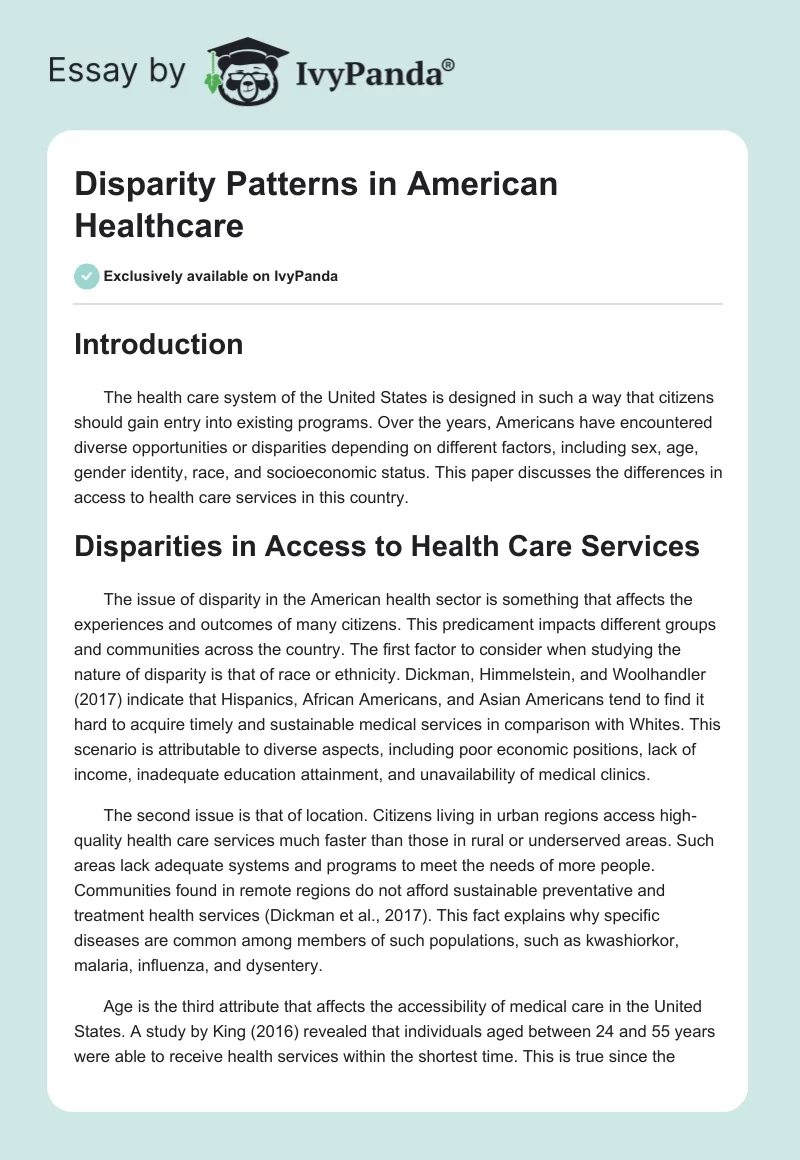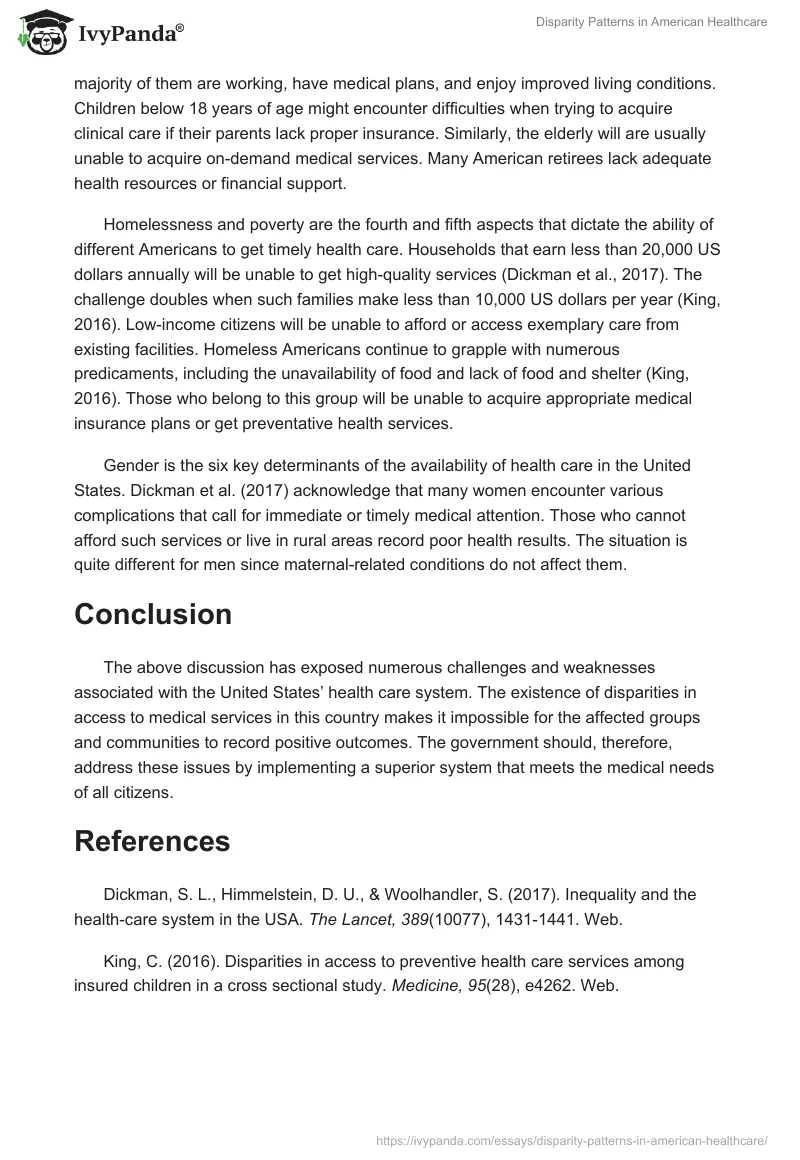Introduction
The health care system of the United States is designed in such a way that citizens should gain entry into existing programs. Over the years, Americans have encountered diverse opportunities or disparities depending on different factors, including sex, age, gender identity, race, and socioeconomic status. This paper discusses the differences in access to health care services in this country.
Disparities in Access to Health Care Services
The issue of disparity in the American health sector is something that affects the experiences and outcomes of many citizens. This predicament impacts different groups and communities across the country. The first factor to consider when studying the nature of disparity is that of race or ethnicity. Dickman, Himmelstein, and Woolhandler (2017) indicate that Hispanics, African Americans, and Asian Americans tend to find it hard to acquire timely and sustainable medical services in comparison with Whites. This scenario is attributable to diverse aspects, including poor economic positions, lack of income, inadequate education attainment, and unavailability of medical clinics.
The second issue is that of location. Citizens living in urban regions access high-quality health care services much faster than those in rural or underserved areas. Such areas lack adequate systems and programs to meet the needs of more people. Communities found in remote regions do not afford sustainable preventative and treatment health services (Dickman et al., 2017). This fact explains why specific diseases are common among members of such populations, such as kwashiorkor, malaria, influenza, and dysentery.
Age is the third attribute that affects the accessibility of medical care in the United States. A study by King (2016) revealed that individuals aged between 24 and 55 years were able to receive health services within the shortest time. This is true since the majority of them are working, have medical plans, and enjoy improved living conditions. Children below 18 years of age might encounter difficulties when trying to acquire clinical care if their parents lack proper insurance. Similarly, the elderly will are usually unable to acquire on-demand medical services. Many American retirees lack adequate health resources or financial support.
Homelessness and poverty are the fourth and fifth aspects that dictate the ability of different Americans to get timely health care. Households that earn less than 20,000 US dollars annually will be unable to get high-quality services (Dickman et al., 2017). The challenge doubles when such families make less than 10,000 US dollars per year (King, 2016). Low-income citizens will be unable to afford or access exemplary care from existing facilities. Homeless Americans continue to grapple with numerous predicaments, including the unavailability of food and lack of food and shelter (King, 2016). Those who belong to this group will be unable to acquire appropriate medical insurance plans or get preventative health services.
Gender is the six key determinants of the availability of health care in the United States. Dickman et al. (2017) acknowledge that many women encounter various complications that call for immediate or timely medical attention. Those who cannot afford such services or live in rural areas record poor health results. The situation is quite different for men since maternal-related conditions do not affect them.
Conclusion
The above discussion has exposed numerous challenges and weaknesses associated with the United States’ health care system. The existence of disparities in access to medical services in this country makes it impossible for the affected groups and communities to record positive outcomes. The government should, therefore, address these issues by implementing a superior system that meets the medical needs of all citizens.
References
Dickman, S. L., Himmelstein, D. U., & Woolhandler, S. (2017). Inequality and the health-care system in the USA. The Lancet, 389(10077), 1431-1441. Web.
King, C. (2016). Disparities in access to preventive health care services among insured children in a cross sectional study. Medicine, 95(28), e4262. Web.


